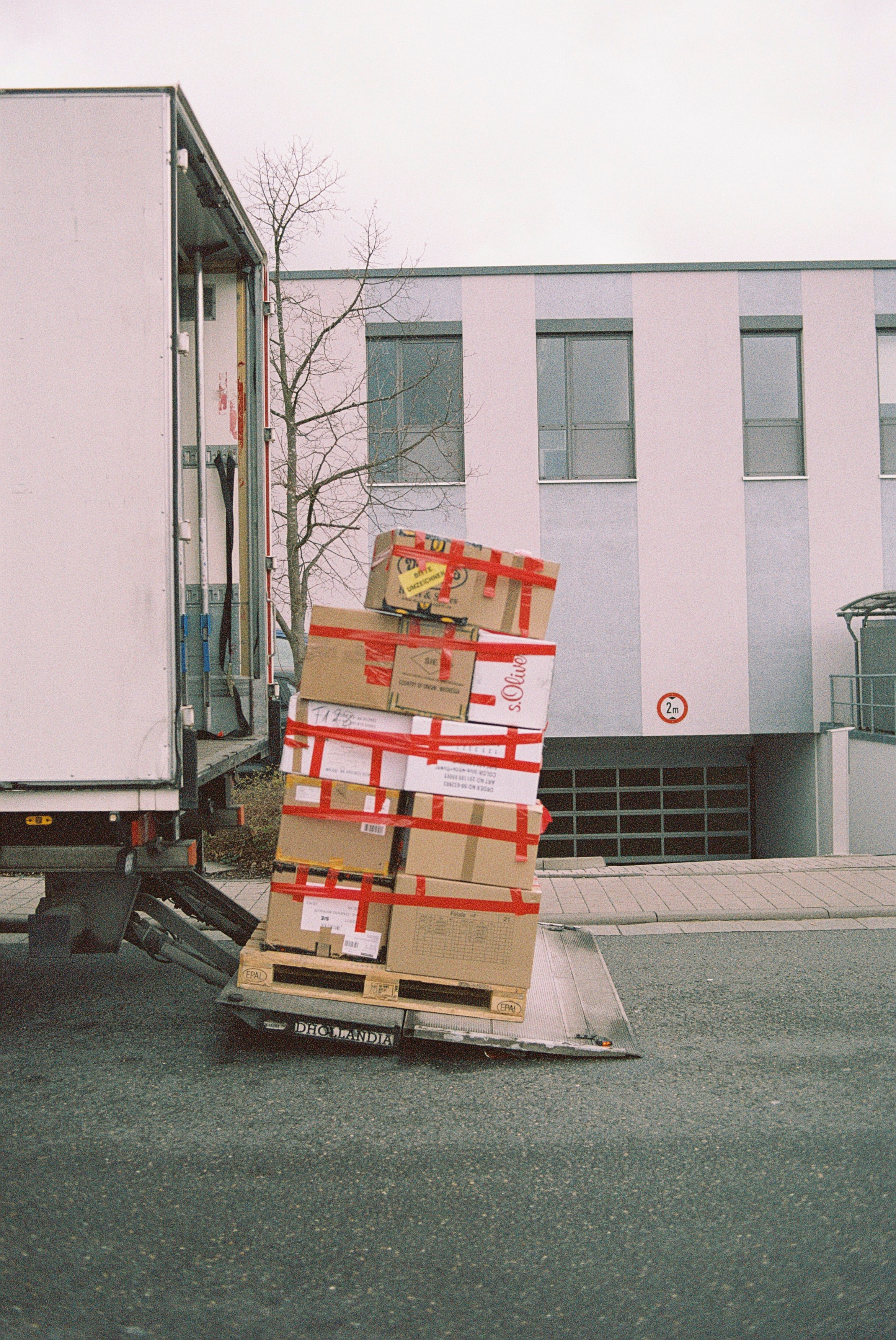Office relocations have increased in the past few years, which has increased the size of the moving industry. There has been a 5.4% growth in the moving industry given the high number of relocations in the state and out of it as well.
Relocating a business isn’t easy, and there are a lot of things you need to do. It neither starts nor ends with hiring business office movers.
You’ll need to do a lot more for a successful business move, whether it’s relocating a restaurant or a data center.
There is an often forgotten or ignored part of making a move successful, and that’s the employees.
Employees are imperative in the relocation because they’re the ones who keep the business operations running and make up the majority of the organization.
We already know relocation is stressful, but it can be even more for employees when they aren’t involved and don’t know what’s going on.
Let’s look at some of the effects on employees and how a business can help make the transition easier.
Effect of Relocating on Employees
Employees are an integral part of the organization and are mostly the reason behind its success. An office relocation isn’t just moving your base of operations to another place for them.
Employees can be used to the place and have set schedules, they might find comfort in where their office or place of work is located, or maybe they’re hoping for a move to happen so they can have a bigger space.
The effect on the employee and their feelings and reactions to it can vary depending on the situation and reason for the move.
1. New Creative Space: Positivity and Inspiration
A survey found that office relocation for small businesses positively affected 68% of the employees and improved their mood.
They felt more positive and were inspired to increase their productivity when their living spaces improved.
Many small businesses face a lack of funds to enlarge their working space, so they find new and creative ways to make the most out of what they have.
Although a creative space helps employees settle and get used to it, relocating to a new place that’s potentially larger or has other benefits will inspire them more.
Locating to a better place can significantly improve the employees’ morale, which is why businesses should always consider their desires and happiness when picking a new location.
2. Downsizing Environment: Lower Motivation
Relocation is not always a positive move. Sometimes a company might suffer losses and be forced to downsize with their location and employees to prevent closing down the business.
Workplace reduction or a decrease in the workforce has some adverse effects on the employees. These effects might even continue after that can stunt the growth of the employees.
Seeing their working space reduced or seeing their colleagues they may have developed a friendly relationship with leave discourages and demotivates the employees.
Many people are uncomfortable with a negative change, and this shows up in their work performance and behavior towards superiors.
That’s because downsizing, even just the workplace, might instill worries about layoffs in the employees’ minds.
3. Shift to Flexible Work: Improves Company Culture
The pandemic shifted how we saw most things in the world; we realized how vulnerable we could be to disease and how fast medicine had progressed.
Moreover, most of us didn’t need to go into a physical workplace to perform efficiently. This has resulted in many companies introducing a flexible work culture in their offices.
Most companies now offer the choice to work from the office or home, with 1 in 4 people working from home on average. Many people are also actively looking for such opportunities as well.
While the companies introduced a flexible work culture, they don’t need the same square footage as before.
This has become another reason why many organizations have downsized their physical space and are even relocating out of state.
But what effect does it have on the employees? It impacts the company culture and does it for the better.
While many factors go into creating the company culture, offering work flexibility is an action that will have many benefits that’ll keep the employees motivated and happy.
- It shows respect for the employees. This is because it establishes trust between the organization and the employees. It also sets the tone of what the employee-company relationship will be like. Employees feel they are seen as professionals capable of managing their work and not just cogs in the wheel. The faith shown in them will encourage them to work harder. In return, the company will also thrive because it’s a relationship based on mutual respect.
- Employee satisfaction levels increase. This is because workplace flexibility help employees maintain a good work-life balance which is hard to find in many situations. The staff feels happier and more balanced, which helps them become more engaged with their work rather than panic when they see business office movers.
4. During the Relocation: Increased Concerns
There are different reasons to relocate, and they all carry their impact. Similarly, during the move, your employees also have certain feelings and concerns about the relocation.
Some people are resistant to change, but at the same time, others might feel excited at the prospect of starting anew in a new place.
The relocation is an important period where employees have a lot of different feelings. However, some concerns are common among them.
- What is the commute time like to the new location?
- How will they travel from their homes to the new location?
- Is there any public transport available nearby?
- Are there parking spots near the office?
- Does the new location have local facilities nearby like cafes, sandwich shops, etc.?
- What’s the new office floor plan like, and where will they sit?
- Will there be a change in working practices?
5. Out-of-State Relocations: A Mix of Feelings
Moving to a new state is a big decision and is often undertaken by people to be closer to their loved ones or to progress in their careers.
Many employees that are integral to the organization are often asked to relocate with the company, or if the company has another branch where they can help better, they are asked to relocate. Out-of-state office relocations have become common, particularly in California.
Employees relocating as well can have a mix of feelings about the move. 75% of employees were reportedly more productive post-move and highly engaged in their work as well.
One of the reasons for such positive feelings is because such employees also receive with the move.
On the other hand, if the employee isn’t given enough benefits and was not provided assistance for the move, they might have negative feelings about the move.
How to Prepare Employees for Office Relocation
Relocation isn’t easy on anyone, let alone employees who have gotten used to working in a particular space. It comes with its fair share of challenges that are often not addressed by relocating organizations.
Office relocation involves more than just hiring business office movers and moving the belongings to a different spot.
Your employees that make up the organization need to be taken into account pre-move, during the move, and post-move.
1. Recognize the Difference Between Transition and Change
Before you apply any method to ensure employee happiness and engagement during the office relocation, you first need to realize the difference between transition and change.
Any change in the organization is equivalent to a change in people. Moreover, there’s a fundamental difference between a transition and a change during company relocation.
Getting your employees through the transition is essential if you want to resume business operations as planned.
A change without an effective transition is a rearrangement of chairs and the involvement of commercial movers in the office space.
Relocations are also called “trigger events” alongside mergers, acquisitions, and leadership changes. It cascades changes in mental shifts which will trigger emotions that affects people’s reactions.
Unfortunately, the emotions aren’t always positive. Many organizations manage this time by bombarding the employees with colorful information about the new environment, but this method fails to recognize the difference between change and transition.
This shift in the mindset of employees doesn’t change after the event; rather, it’s an ongoing process and needs to be treated as such.
2. Keep Communication Lines Open
According to a survey, 45% of respondents believe relocation is one of the most stressful events in their life. That’s true whether you make a commercial move or a residential move.
To help make the move easier on the employees, a business should keep communication lines open and ensure it’s continuous and comprehensive.
It should expand on a variety of fronts, so employees are aware of what’s happening every single step of the way. Also, ensure that communications go both ways as there are other benefits to it as well.
3. Allocate Different Responsibilities
Get the employees involved. It keeps them engaged and apprised about the move. There are several things to do during a move.
The employees know the office layout well and, after spending a lot of time in the place, know more about it than others.
Assign them different responsibilities, but keep them small so they aren’t distracted from their work. It’s a good way to keep the employees’ worries about a move away and assure them that the company cares about them.
4. Pick Supervisors from Among the Employees
Employees will be worried about moving if they’re just on the outside looking in. Even if there are friendly managers, there’s camaraderie among colleagues in similar positions.
If you can’t involve every employee in the move, pick a few of them to create. Close friendships at work already boost employee satisfaction by 50% and involve a few people who can then assure their colleagues about the relocation, which will keep them happy.
5. Ask for Employee Feedback
An organization in the middle of relocating or planning to relocate should always take its employees into account. They should ask for feedback on what the new space should include before the new location is selected.
This is because employees are the ones experiencing the best and the worst of the place. There might be new technology that the employees need, or their cubicles might be too small, and they’ll need a larger cubicle to be comfortable.
6. Involve Them in the Move
Companies with happier employees are 20% more productive than their competitors. And a way to keep employees happy is to keep them engaged in the company.
Employees who are more involved in the organization are more likely to work towards its betterment and find satisfaction in doing so. You can get them engaged during the move as well.
Companies hire commercial office moving companies to take care of their moving needs, but there are some things that you’ll have to handle yourself, such as packing up personal belongings.
You can involve your employees here as well. Make a day out of it, pack your possessions together, go out for lunch, and take breaks in between.
These are just some of the things you can get together and do for a fun packing/moving day.
The Top Business Movers in California
Picking the right commercial movers means saying goodbye to the raging headache of the thousands of minor details you’ll have to look at.
Moreover, trusted commercial relocators will streamline the planning, packing, and moving process. They’ll make sure the move gets done as you want, and you don’t lose anything important in the business relocation.
If you’re looking for a reliable office moving company, check out Valley Relocation, which is the place to go for all your commercial moving needs!
We are a full-service moving company with decades of experience, and our commercial moving services are the most noticeable across the state.
We even offer large-scale commercial relocation using specialized transportation services in several areas of California.
The professional movers serve commercial customers in technology, hospitality, healthcare, etc. You can check out our website for more information or contact us for a cost estimate or a free site survey.






